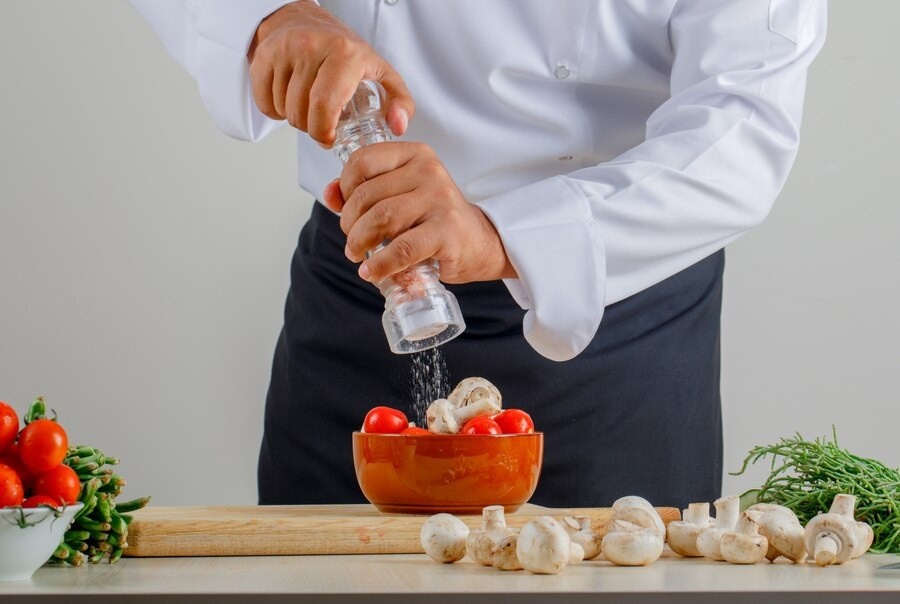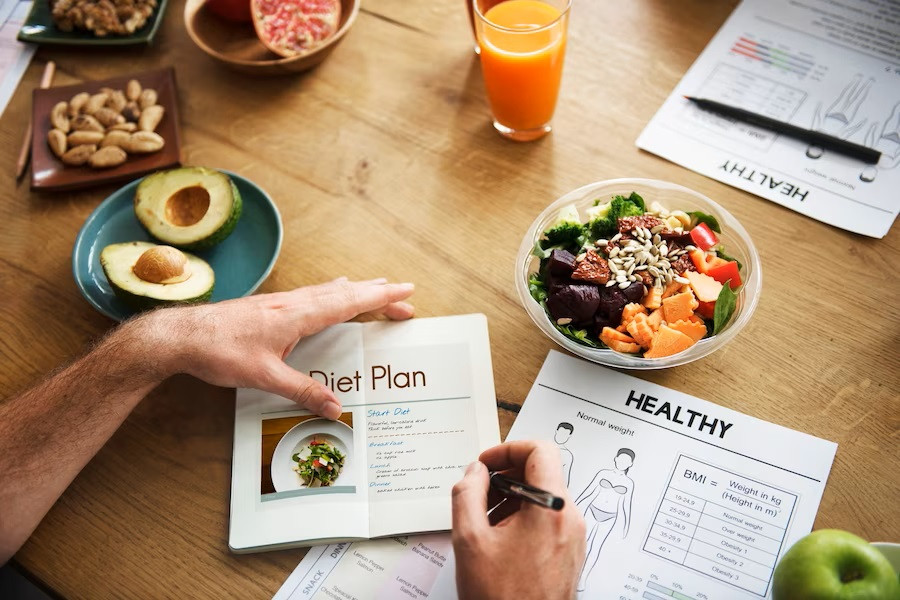Mengonsumsi makanan tanpa garam tentu saja hambar dan tidak menyenangkan. Namun, mengonsumsi garam berlebihan dapat berdampak negatif pada kesehatan, termasuk tekanan darah tinggi, meningkatnya risiko penyakit jantung, stroke, serta menyebabkan hilangnya kalsium dari tubuh. Kehilangan kalsium ini juga dapat menyebabkan penurunan kepadatan tulang dan meningkatkan risiko osteoporosis.
Lantas bagaimana cara mengurangi asupan garam agar tidak berlebihan? Simak tips dari para ahli yang diulas dalam artikel ini.
Cara Mengurangi Asupan Garam Sehari-Hari
Organisasi kesehatan dunia (WHO) merekomendasikan beberapa langkah preventif untuk mengurangi asupan garam sehari-hari. Berikut adalah cara yang bisa dicoba:
Mengurangi konsumsi makanan olahan
Makanan olahan seperti sosis, bakso, saus, keripik kentang, keripik sayuran, umumnya dibuat dengan garam yang banyak jumlahnya. Gantikan makanan tersebut dengan makanan segar seperti wortel, mentimun, tomat cherry, paprika, tempe, dan makanan yang dimasak sendiri di rumah.
Bumbu instan juga mungkin mengandung garam yang tinggi. Gunakan bumbu segar seperti bawang putih, bawang merah, jahe, dan rempah-rempah lain untuk memberi rasa pada masakan tanpa mengandalkan garam berlebihan.
Memilih produk rendah garam
Saat membeli makanan kemasan, utamakan memilih produk rendah kandungan natrium, yaitu yang kurang dari 120 mg per 100 g. Selalu periksa label gizi produk untuk memastikan kandungan natrium dan nutrisi lainnya.
Baca Juga: Benarkah Mengonsumsi Garam Membuat Badan Gemuk?
Memasak dengan sedikit atau tanpa tambahan garam
Para ahli kesehatan memang menyarankan Anda untuk membatasi asupan garam 1 sdt per hari. Namun, Anda bisa berusaha menggunakan tidak lebih dari 1/2 sdt garam setiap hari saat memasak. Ini adalah langkah yang baik untuk mengurangi asupan garam secara keseluruhan.
Pada awalnya, Anda mungkin sedikit tidak terbiasa. Namun, seiring waktu lidah Anda akan beradaptasi dengan jumlah garam yang lebih rendah dan dapat menikmati rasa makanan alami tanpa tambahan garam.
Membatasi penggunaan saus dan dressing
Saus kemasan dan dressing tinggi kandungan garam. Garam di dalam saus dan dressing digunakan untuk meningkatkan rasa dan daya tahan produk sehingga menambahkan saus dan dressing dapat menyebabkan konsumsi garam berlebih.
Beberapa orang mungkin menambahkan saus atau dressing untuk membuat makanan lebih menarik. Agar tetap bisa mendapatkan manfaat yang sama, Anda bisa membuat saus dan dressing sendiri di rumah dengan menggunakan bahan-bahan segar dan rempah-rempah alami.
Anda juga bisa memilih produk saus atau dressing yang diberi label rendah natrium atau tanpa tambahan garam untuk menghindari mengonsumsi garam berlebihan.
Baca Juga: Risiko Menambahkan Saus Mayonnaise Dalam Makanan Anda
Menggunakan rempah-rempah
Rempah-rempah dapat menjadi bumbu alternatif garam yang lebih bervariasi rasa dan manfaat kesehatannya. Beberapa bumbu dan rempah yang bisa digunakan memberi rasa pada makanan selain garam di antaranya:
- Merica
- Kunyit
- Kayu manis
- Jintan
- Jahe
- Bawang putih dan bawang merah
- Daun ketumbar
- Daun salam
- Kemiri
- Serai
- Asam jawa
Selain cara di atas, Anda juga sebaiknya tidak menyediakan garam di meja sehingga tidak ada keinginan untuk menambahkan garam lagi ke dalam makanan yang hendak dikonsumsi.
Itulah beberapa langkah penting untuk mencegah mengonsumsi garam berlebihan. Kebiasaan mengonsumsi garam berlebihan dapat menyebabkan hipernatremia, di mana kadar natrium dalam darah terlalu tinggi. Penting untuk membatasi asupan garam agar tidak berlebihan dan memastikan minum cukup air untuk menjaga keseimbangan cairan dan elektrolit di dalam tubuh.
Jika Anda mengalami gejala hipernatremia seperti haus ekstrem, kebingungan, atau kelemahan otot yang tidak biasa, segera dapatkan pertolongan medis di rumah sakit.
Memiliki pertanyaan lain terkait asupan garam sehari-hari? Anda bisa memanfaatkan layanan konsultasi kesehatan dengan mengunduh aplikasi Ai Care melalui App Store atau Play Store.
Mau tahu tips dan trik kesehatan, pertolongan pertama, dan home remedies lainnya? Cek di sini, ya!
- dr. Monica Salim
WHO (2023). Sodium reduction. Available from: https://www.who.int/news-room/fact-sheets/detail/salt-reduction
Harvard TH Chan (2023). Salt and Sodium. Available from: https://www.hsph.harvard.edu/nutritionsource/salt-and-sodium
Marsha McCulloch, MS, RD (2023). 30 Foods High in Sodium and What to Eat Instead. Available from: https://www.healthline.com/nutrition/foods-high-in-sodium
Mayo Clinic (2023). Sodium: How to tame your salt habit. Available from: https://www.mayoclinic.org/healthy-lifestyle/nutrition-and-healthy-eating/in-depth/sodium/art-20045479
NHS UK (2023). Salt in your diet. Available from: https://www.nhs.uk/live-well/eat-well/food-types/salt-in-your-diet/
Suzana Shahar, et all (2019). Sodium content in sauces—a major contributor of sodium intake in Malaysia: a cross-sectional survey. Available from: https://www.ncbi.nlm.nih.gov/pmc/articles/PMC6538051/
Lizzie Streit, MS, RDN, LD (2020). 18 Flavorful Salt Alternatives. Available from: https://www.healthline.com/nutrition/salt-alternatives
WebMD (2023). What Is Hypernatremia?. Available from: https://www.webmd.com/a-to-z-guides/what-is-hypernatremia











